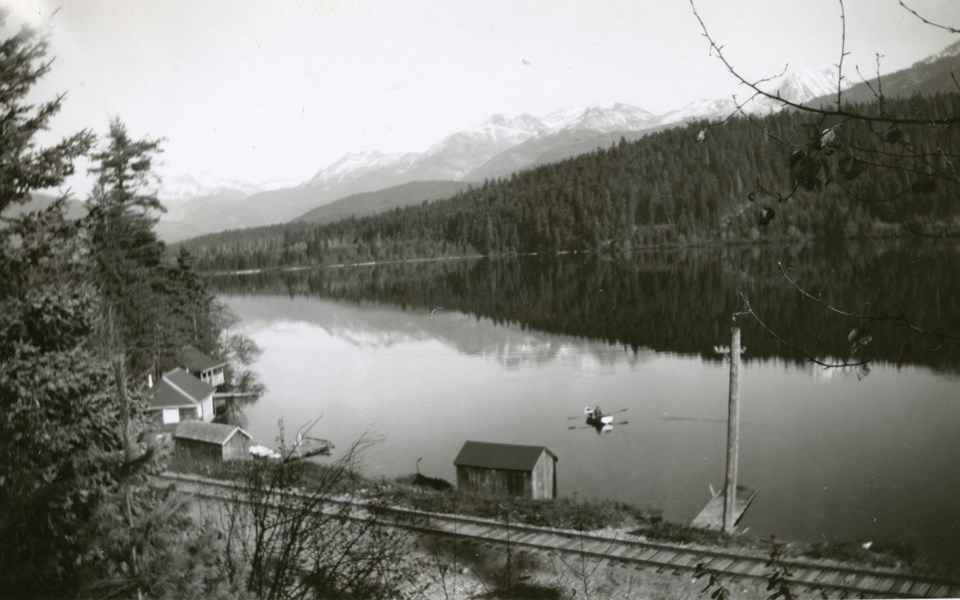The names of people, places and things sometimes change. At the beginning of the 20th century, Whistler Mountain was labelled on maps as London Mountain and, until the creation of the Resort Municipality of Whistler in 1975, this area was officially known as Alta Lake. Even Alta Lake was once called Summit Lake.
Some name changes, such as that of Whistler Mountain, occur gradually, beginning as a nickname and then changing officially to reflect the popular name. Others change only partially, leaving enough of the previous name to ensure it is still easily recognizable. An example of this is The Point.
Bert Harrop first came to Alta Lake in 1920 for a short stay at Rainbow Lodge. Like many before and after him, his first stay in the valley ended up lasting a few decades longer than expected. Helped by Alex Philip, the Harrops settled on a point of land on the west side of the lake, just south of Rainbow Lodge, which became known as Harrop's Point.
Bert had been trained as a cabinetmaker in England and he quickly put his skills to use at Alta Lake. Before winter arrived, he and Sewall Tapley had framed in a small house on the beach at Rainbow Lodge. Constructed on a raft of cedar logs and later secured to the shore of Harrop's Point, this became Alta Lake's first (and possibly only) floating cottage.
This cottage was followed by a tearoom with a porch extending over the water. Harrop's Tearoom became a gathering place for locals and visitors, presided over by Bert's wife Agnes. The tearoom was known for more than simply a good meal; Agnes told fortunes by reading tea leaves. According to Pip Brock, whose family began visiting Alta Lake in the 1920s, Agnes "did it very well, assisted by all the rampant local gossip! I used to have my cup read so I could see how I stood in the neighbourhood."
Bert continued building, constructing a cottage on his property to rent out to visitors and others for summer residents, including the Brock family. He also built a workshop for himself. As the snow fell in winter Bert crafted furniture in his workshop, some pieces of which survive today in the museum.
Bert and Agnes sold Harrop's Point in 1948 to Cathy and Ivan Collishaw who continued to run it under that name until they sold it in 1952. Loyd and Sharen Mansell then renamed the enterprise Bob's Point and ran it for only a year before selling to their neighbour Dick Fairhurst, who had been operating Cypress Lodge for a few years before purchasing this property, adding three cabins and a tearoom to his business. Fairhurst's mother Elizabeth Alice moved up from Vancouver to help run Cypress Lodge on Cypress Point. Under her, the tearoom became known for its "Hot Dog Friday Night" when a refrigerated rail car brought fresh food and meat on Fridays as well as Ma Fairhurst's famed butter tarts.
The tearoom and Bert's cottages were demolished in 1962 and replaced with four new cabins, complete with Alta Lake's first coloured bathroom fixtures. Cypress Point became a gathering place for the community, including the Alta Lake Sailing Club and its annual "Regretta." The Fairhursts continued to operate Cypress Lodge until 1972 when it was sold to the Canadian Youth Hostel Association.
For the next few decades, the property was known as the Youth Hostel until the hostel moved away from Alta Lake. Today, the buildings of Cypress Lodge host the Whistler Sailing Club and The Point Artist-Run Centre and is often referred to simply as The Point.




